When I say England I’m sure you think of London, royal castles and quaint villages in the country side. Maybe you think of prestigious university towns like Oxford and Cambridge. And while I’m all about visiting those places, the destination at the top of my list is decidedly not very English — Hadrian’s Wall.
“What? Where’s that?” you ask.
Well let me tell you all about this intriguing site and why it’s at the top of my list.
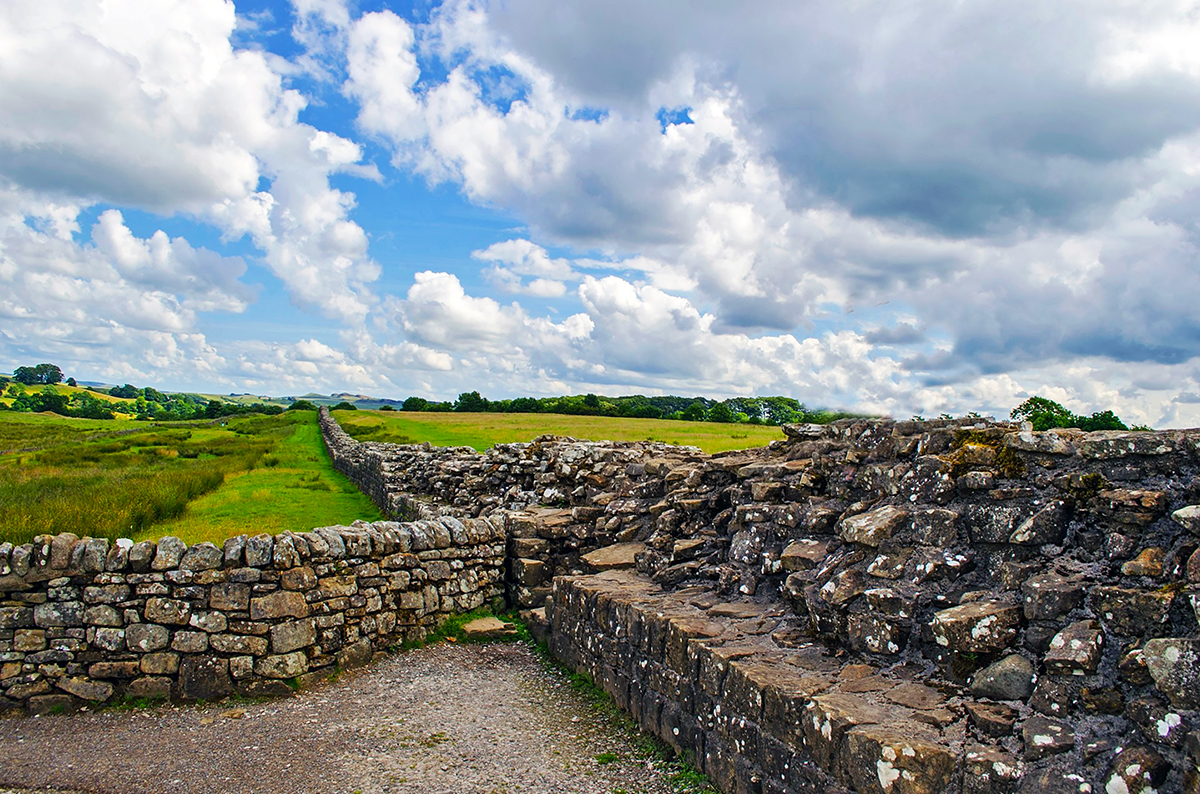
Hadrian’s Wall under a blue sky mixed with clouds, England
Where is Hadrian’s Wall?
If you look at a map of Great Britain zero in on the narrowest part of the island. Now find Bowness-on-Solway in the west (don’t you love these English names?) and Wallsend in the east. The wall runs between these 2 towns. So it’s fairly close to the Scottish border.
What exactly is Hadrian’s wall?
This wall was actually built by the Romans around 122AD. You see northern England was the far northwestern reaches of the Roman Empire at the time. And Hadrian, the Roman Emperor, visited the area in 122AD and decided that a wall was needed to keep out those “barbarians” to the north. Those would be the crazy Scottish folks.
Anyway Hadrian was a pretty cool dude for a Roman Emperor as he was a big traveler which is probably why I have a thing for him. He visited nearly all the provinces of the Roman Empire and was considered a humanist. Hadrian had a love of Greek architecture and was also known to have spent a lot of time with the military, even hanging out with his soldiers. So, I just generally think of him as one of the good emperors.
And this wall, finished around 128AD, was named for him. It’s 73 miles in length (80 Roman miles as they are a bit shorter) and the remains are still there.
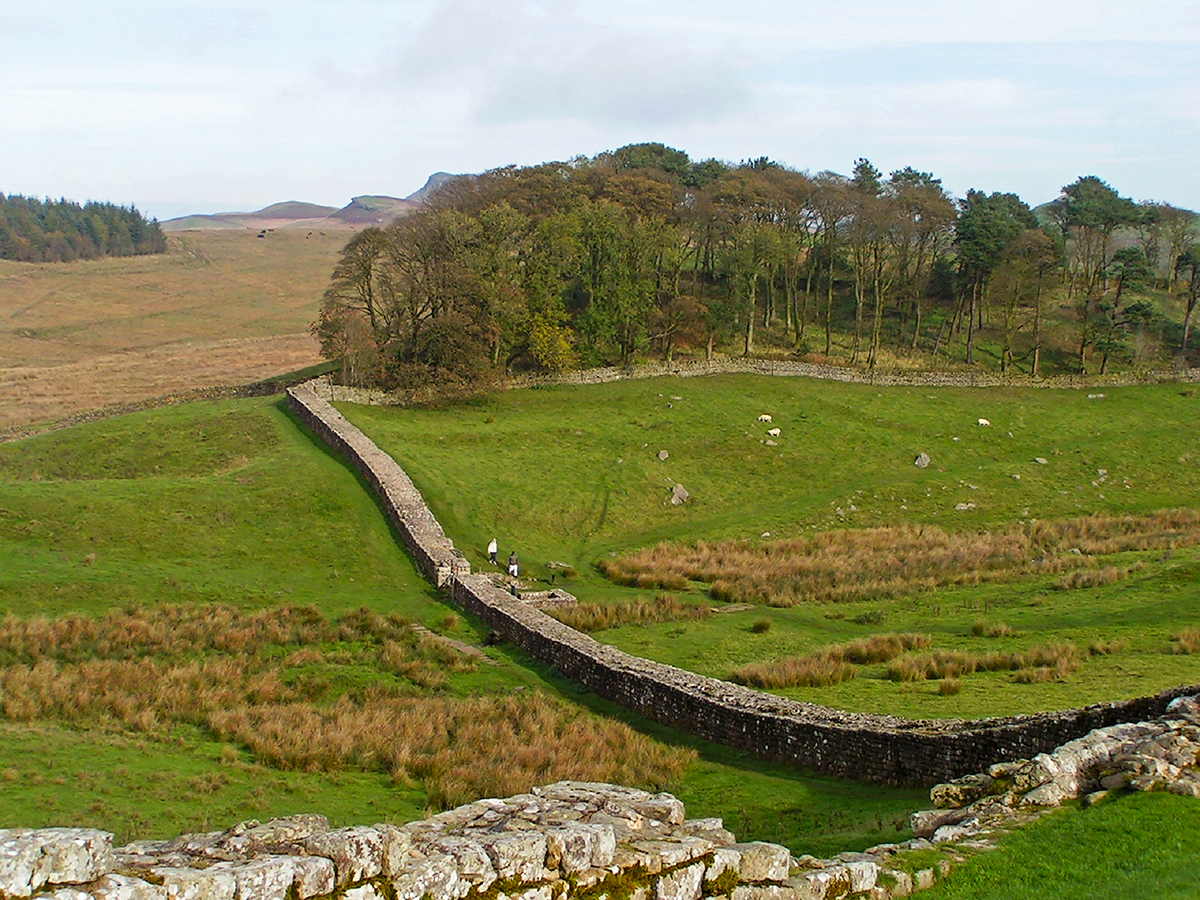
Hadrian’s Wall as it wends its way through pastoral land, England
The structure of the wall
At every mile (Roman mile that is) is a guard post called a milecastle. In between the milecastles are 2 towers along the wall so there are observation points every 1/3 mile (again, I’m talking Roman miles which equals about .95 of our miles today).
Forts can be found every 7 1/3 miles. There are also temples, bridges and civil settlements. So there’s more than just the wall.
The wall itself is in decent shape with the middle section being in the best condition. It’s mostly made of stone which was readily available.
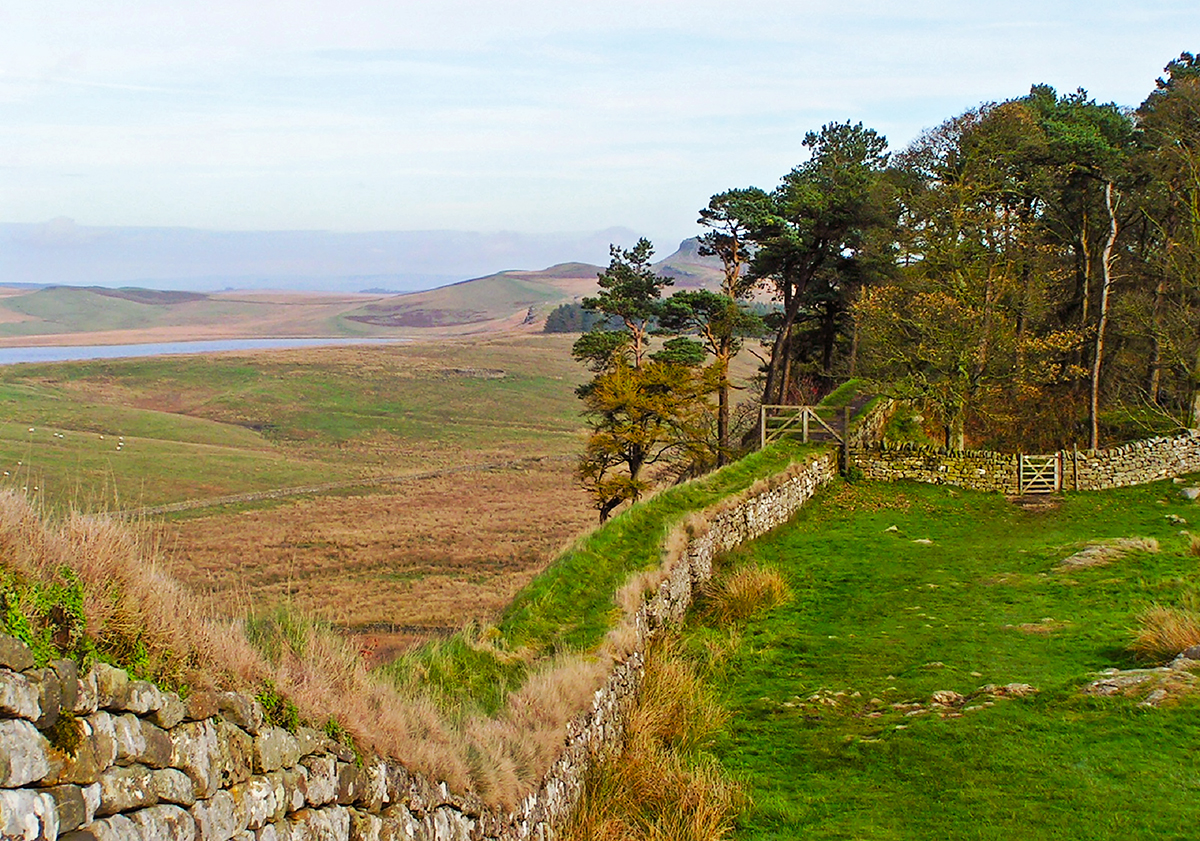
Hadrian’s Wall and the beautiful countryside of northern England
Who on earth built the wall?
The British army. Well they were under Roman rule, but they were the local army. It probably took close to 15,000 men to build the wall. And it’s thought that even the British fleet may have helped.
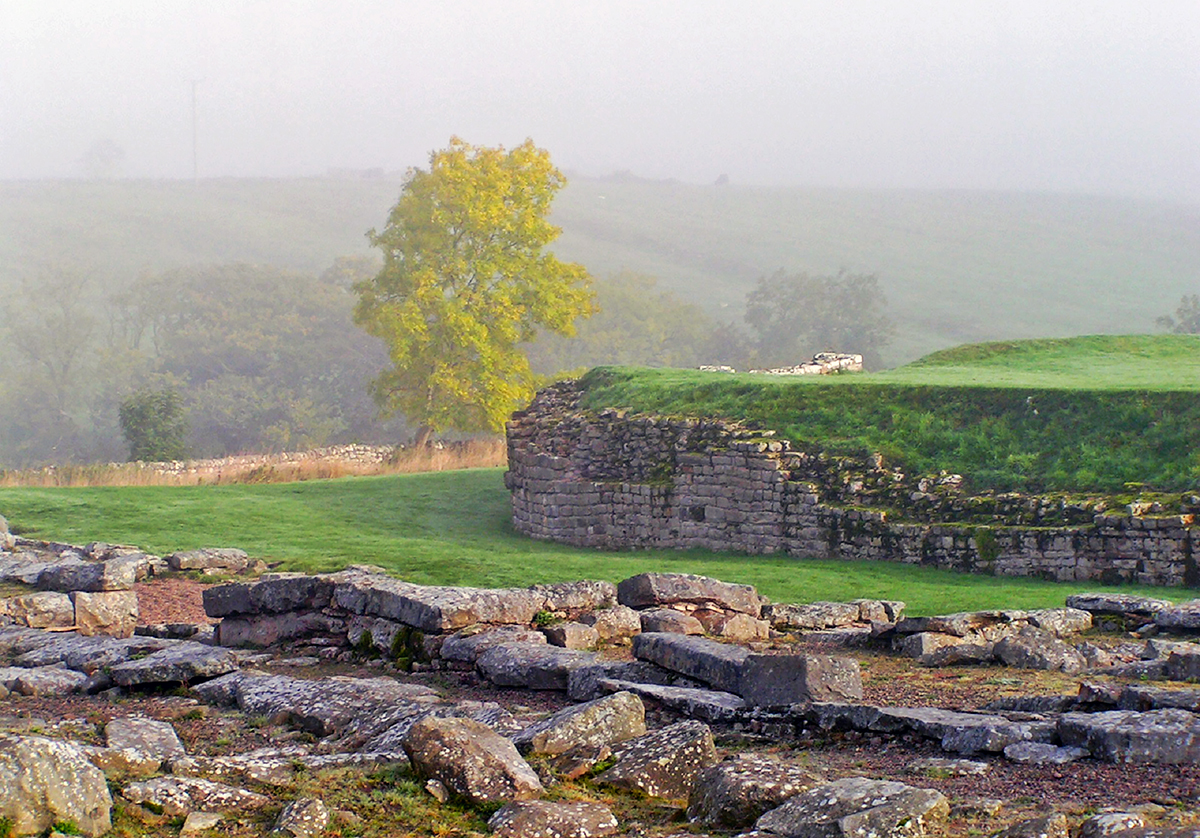
Hadrian’s Wall in the fog, northern England
What happened to the wall?
After good ol’ Hadrian died in 138AD the wall was abandoned for a new wall built by the new emperor. But that didn’t last long — about 20 years — and Hadrian’s Wall was once again favored into the early 5th century which was the end of the Roman Empire in Britain.
The forts were still used at times over the centuries. And some of the rock was hauled away and used to build castles and churches which is a shame. However conservationists sought to protect the wall in the 18th and 19th centuries and in the mid-19th century archeologists and historians began to research it and ultimately protect it from further damage. In 1987 Hadrian’s Wall was made a UNESCO World Heritage Site — which is great for us.
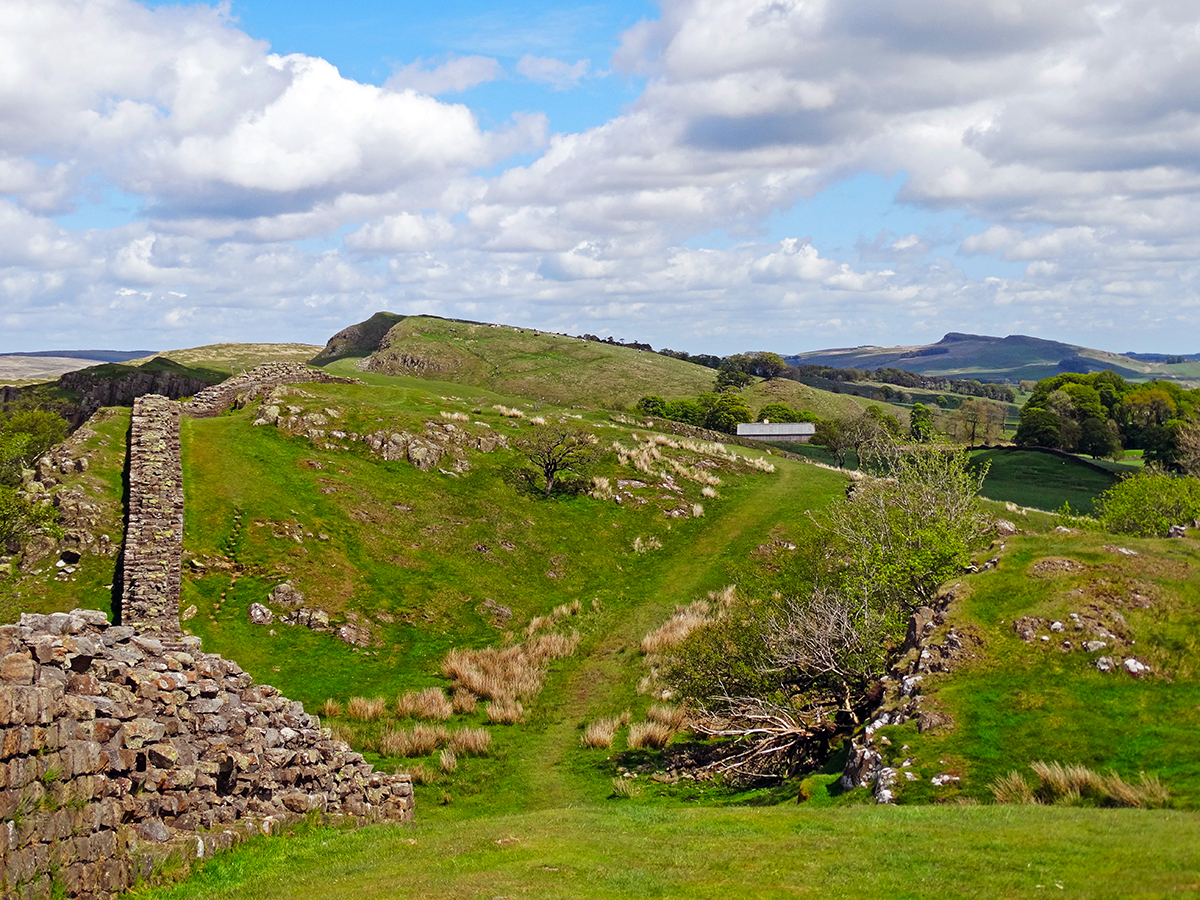
Hadrian’s Wall under a blue sky, northern England
So why is Hadrian’s Wall at the top of my England travel list?
Well, yes, my love of Hadrian and of course, the ties to the Roman Empire — Italy. But there’s something else — there’s a trail along the wall that you can walk. Yes, another of those long distance walks that I’m obsessed with!
This trail wends its way through some of the most beautiful areas of England — from rolling fields to moorlands to charming villages. You can walk the entire length and have your bags meet you at your B&B each night. Or you can just walk part of the trail as there are some easy to moderate day walks.
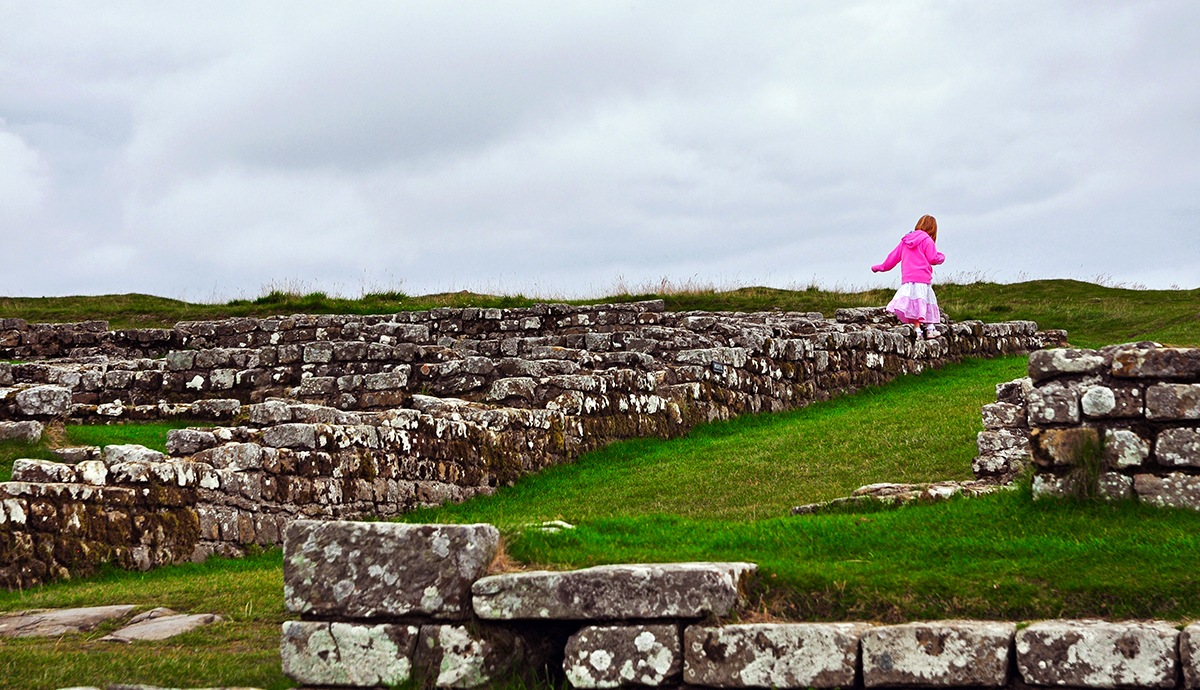
Girl running by one of the homesteads along the Hadrian’s Wall trail in northern England
There’s obviously some incredible history here as well. So while it’s a gorgeous scenic walk, it’s also cultural. There are museums along the way so you can learn about how the wall was built, how it was used, what life was like for the soldiers back then and much more.
The trail is actually a tad bit longer than the wall at 84 miles. It takes roughly a week to walk the entire length. You can walk it from east to west or west to east. It’s up to you.
For me it’s a fascination with the Roman Empire and the might and ingenuity of the Roman people. And of course, the idea of a long walk not only through the gorgeous pastoral English countryside, but to walk through history? Well, that’s icing on the cake.
All photos courtesy of Pixaby.

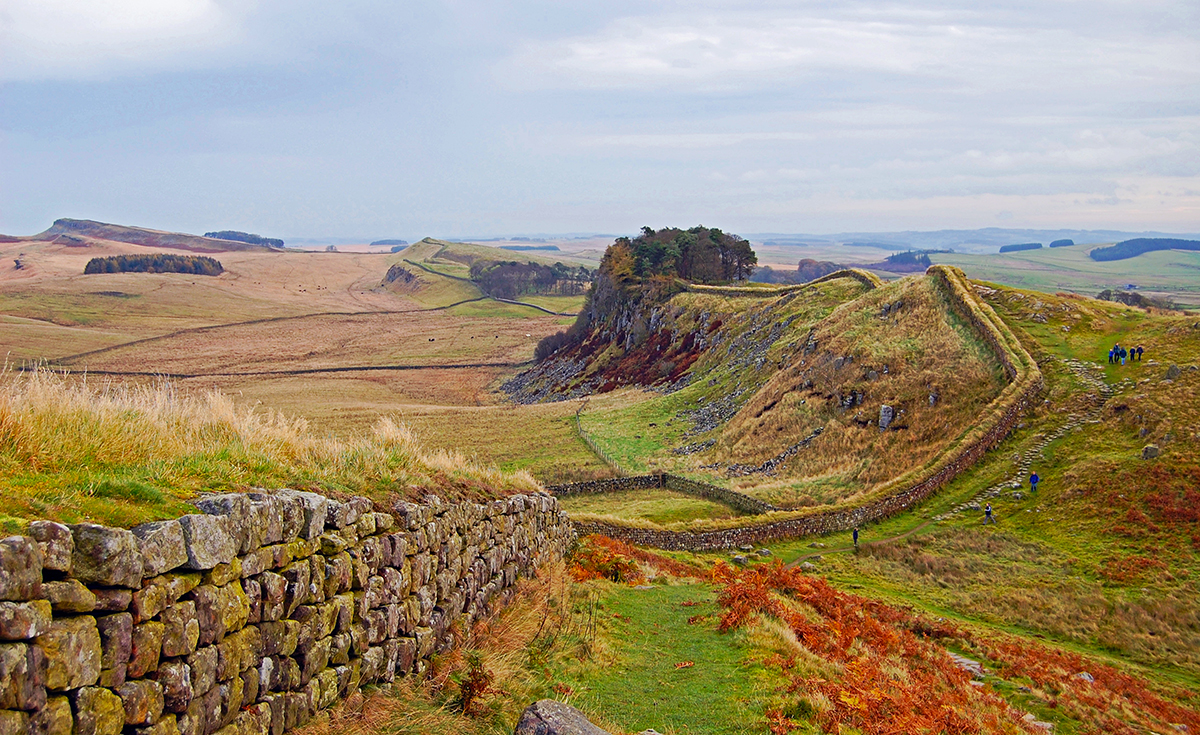






Very interesting story, and completely something all new
to me. Thank You
You’re welcome, Judy. I aim to inspire and educate as well as plan your trips!!